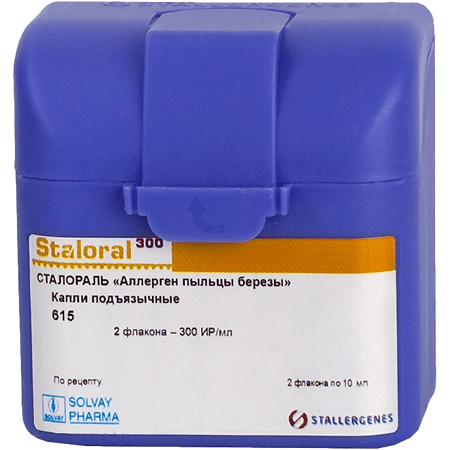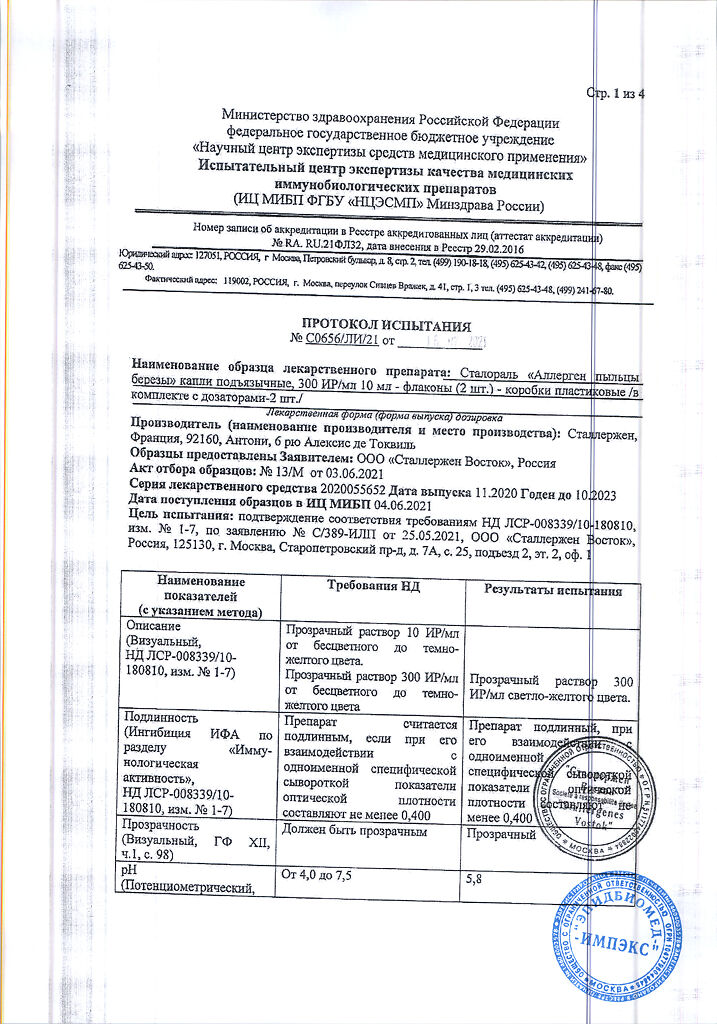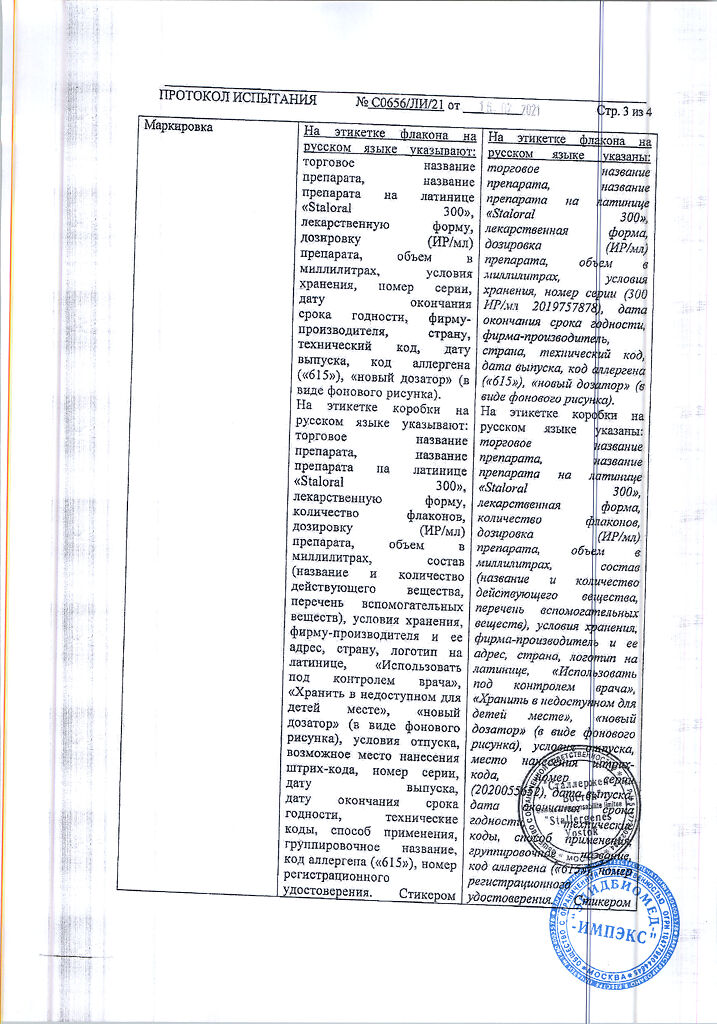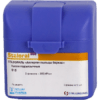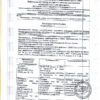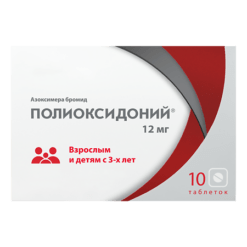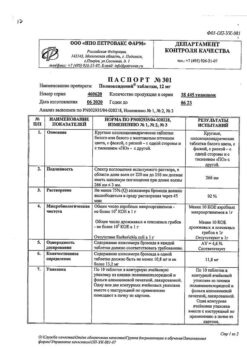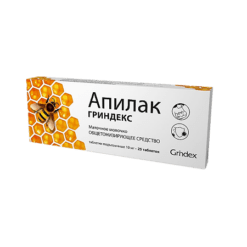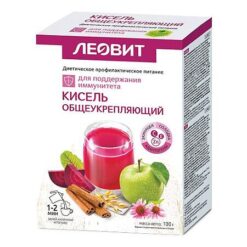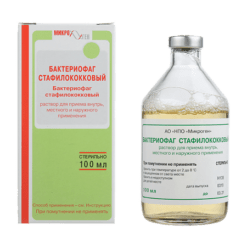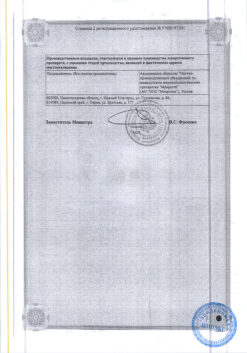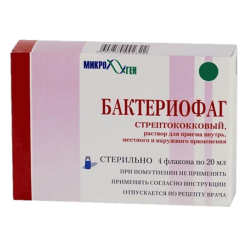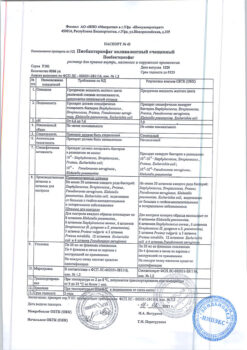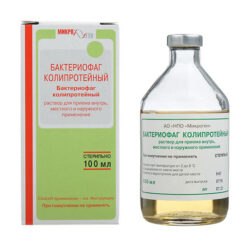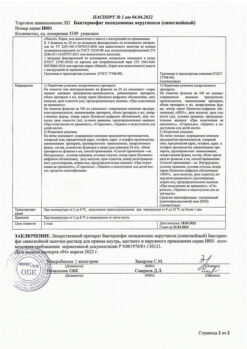No products in the cart.
Staloral Allergen of birch pollen, drops 10 ml 2 pcs
€1.00
Out of stock
(E-mail when Stock is available)
Description
The exact mechanism of allergen action during allergen-specific immunotherapy (ASIT) is not fully understood. The following biological changes have been proven:
- appearance of specific antibodies (IgG4) playing the role of “blocking antibodies”;
- reduction of specific IgE levels in plasma;
- decrease in the reactivity of the cells involved in the allergic reaction;
- increased interaction between Th2 and Th1, leading to a positive change in cytokine production (decreased IL-4 and increased ?-interferon) which regulate the production of IgE.
The administration of ASIT also inhibits the development of both the early and late phase of the immediate allergic reaction.
Indications
Indications
Allergen specific immunotherapy (ASIT) for patients with type 1 allergic reactions (IgE-mediated), suffering from rhinitis, conjunctivitis, mild or moderate form of bronchial asthma of seasonal nature, having hypersensitivity to birch pollen.
Immunotherapy is suitable for adults and children from the age of 5 years.
Composition
Composition
Active ingredient:
Birch pollen allergen extract 10 IR/ml*, 300 IR/ml
Associates:
Sodium chloride,
Glycerol,
Mannitol,
purified water
*IR/ml – Reactivity Index is a biological unit of standardization.
How to take, the dosage
How to take, the dosage
The effectiveness of ASIT is higher when treatment is started early in the course of the disease.
Dosage and treatment regimen
The dosage and regimen of the drug is the same for all ages, but can be changed depending on the individual reactivity of the patient.
The attending physician adjusts the dosage and the treatment regimen according to the possible symptomatic changes in the patient and the individual response to the drug.
The treatment should be started at least 2-3 months prior to the expected flowering season and continued throughout the flowering season.
The treatment consists of two phases: initial and maintenance therapy.
1. Initial therapy begins with a daily dosing concentration of 10 IU/ml (blue bottle cap) with one press of the pipette and gradually increases the daily dosage to 10 presses. One pressure on the pipette is about 0.1 ml of the drug.
Then proceed to daily dosing of the 300 IU/ml concentration (purple vial cap), starting with a single press and gradually increasing the number of presses to the optimal (well tolerated by the patient). The first stage may last 9 to 21 days. During this period the maximum dosage individual for each patient is reached (4 to 8 pressings daily of the drug concentration of 300 IR/ml), after which the second stage is passed.
Recommended scheme for the initial course of ASIT:
Vial of 10 IR/ml (blue cap)
Vial of 300 IR/ml (purple cap)
2. Constant dose maintenance therapy using a 300 I.R./ml concentration vial. The optimal dose achieved in the first phase of initial therapy is continued in the second phase of maintenance therapy.
The recommended dosing regimen is 4 to 8 doses daily or 8 doses 3 times per week.
Duration of treatment
Allergen-specific immunotherapy is recommended to be carried out by the above mentioned two-stage courses (2-3 months before the supposed blooming season to the end of the season) for 3-5 years.
If after the treatment no improvement is seen during the first blooming season, the advisability of ASIT should be reconsidered.
How to use
Before taking the drug, make sure that:
The drug is recommended to be taken in the morning before breakfast.
The drug should be dropped directly under the tongue and held for 2 minutes, then swallowed.
Children are recommended to use the drug with the help of adults.
For safety and preservation of the drug the vials are sealed with plastic caps and rolled with aluminum caps.
Prescribing interruption of the drug
In case of prolonged missing of taking the drug it is necessary to consult the attending physician.
If the missed dose is less than one week, it is recommended to continue treatment without change.
If the missed dose is more than one week at baseline or maintenance therapy, it is recommended that therapy be restarted with one press of the dosing device using the same concentration of the medication (as before the pause) and then increased in number of pressings, according to the Initial Therapy dosing schedule, to the optimal well tolerated dose.
Interaction
Interaction
Do not use simultaneously with the intake of beta-adrenoblockers.
Possible simultaneous use with symptomatic antiallergic drugs (H1 antihistamines, beta-2-mimetics, corticoids, mast cell degranulation inhibitors) for better tolerance of ASIT.
Special Instructions
Special Instructions
If necessary, allergy symptoms should be stabilized with appropriate therapy before starting ASIT.
Patients undergoing ASIT should always carry medications to relieve allergy symptoms, such as corticosteroids, sympathomimetics and antihistamines.
When severe itching of the palms, hands, soles of the feet, hives, swelling of the lips, larynx, accompanied by difficulty in swallowing, breathing, changes in voice should be consulted immediately. In these cases, the doctor may recommend taking epinephrine. Patients taking tricyclic antidepressants, monoamine oxidase inhibitors have an increased risk of side effects of epinephrine up to fatal outcome. This fact should be taken into consideration when prescribing ASIT.
In case of inflammatory processes in the oral cavity (mycosis, aphthae, gum damage, tooth extraction/loss or surgery) the therapy should be stopped until the inflammations are completely cured (at least for 7 days).
In the course of ASIT, vaccination is possible after consultation with the doctor.
For patients, especially children on a diet with reduced salt intake, note that the drug contains sodium chloride (one press of the pipette is about 0.1 ml of the drug with 5.9 mg of sodium chloride).
When traveling, make sure that the bottle is in an upright position. The bottle should be in a box with a protective ring on the dispenser. At the first opportunity, the bottle should be placed in the refrigerator.
Contraindications
Contraindications
Side effects
Side effects
The administration of ASIT may cause both local and general adverse reactions.
Dosage and treatment regimen can be revised by the attending physician in case of an individual reaction or changes in the patient’s general condition.
Local reactions:
In general, these symptoms go away quickly, and there is no need to change the dosage and treatment regimen. If symptoms occur frequently, continuation of therapy should be reconsidered.
General reactions are rare:
Rare side effects not related to Ig-E mediator reactions:
Overdose
Overdose
If the prescribed dose is exceeded, there is an increased risk of side effects, which requires symptomatic treatment.
Additional information
| Conditions of storage | Store and transport at temperatures from 2 to 8 ° C. |
|---|---|
| Manufacturer | Stallergen, France |
| Medication form | oral drops |
| Brand | Stallergen |
Related products
Buy Staloral Allergen of birch pollen, drops 10 ml 2 pcs with delivery to USA, UK, Europe and over 120 other countries.

